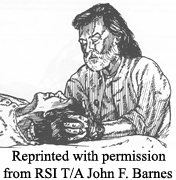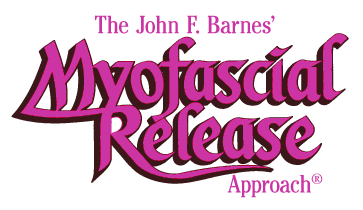Frequently Asked Questions (FAQs)
A gentle, safe, hands-on approach to relieving tension, pain, and dysfunction throughout the body. This approach targets the fascial system which is a tough connective tissue that spreads throughout your body from head to toe (much like a three dimensional spider web). When this fascia is damaged through trauma or inflammation it binds down and can put pressure on muscles, nerves, organs, blood vessels and bones. Myofascial Release is one of the most effective forms of bodywork available today.

Fascia is the soft tissue component of the connective tissue system. It interpenetrates and surrounds muscles, bones, organs, nerves, blood vessels and other structures. Fascia is an uninterrupted, three-dimensional web of tissue that extends from head to toe, from front to back, from interior to exterior. It is responsible for maintaining structural integrity; for providing support and protection; and acts as a shock absorber. Fascia has an essential role in hemodynamic and biochemical processes, and provides the matrix that allows for intercellular communication. After injury, it is the fascia that creates an environment for tissue repair. Fascia can refer to dense planar fascial sheets (such as the Fascia lata) as well as joint capsules, organ capsules, muscular septa, ligaments, retinacula, aponeuroses, tendons, myofascia, neurofascia, and other fibrous collagenous tissues. (Source: http://www.fasciacongress.org/fascia-glossary-of-terms/ )

There is a substantial body of research on connective tissue generally focused on specialized genetic and molecular aspects of the extracellular matrix. However, the study of fascia and its function as an organ of support has been largely neglected and overlooked for many years. Since fascia serves both global, generalized functions and local, specialized functions, it is a substrate that crosses several scientific, medical, and therapeutic disciplines, both in conventional and complementary/alternative modalities. Among the different kinds of tissues that are involved in musculoskeletal dynamics, fascia has received comparatively little scientific attention. Fascia, or dense fibrous connective tissues, nevertheless potentially plays a major and still poorly understood role in joint stability, in general movement coordination, as well as in back pain and many other pathologies. One reason why fascia has not received adequate scientific attention in the past decades is that this tissue is so pervasive and interconnected that it easily frustrates the common ambition of researchers to divide it into a discrete number of subunits which can be classified and separately described. In anatomic displays the fascia is generally removed, so the viewer can see the organs nerves and vessels but fails to appreciate the fascia which connects, and separates, these structures. (Source: http://www.fasciacongress.org/about-fascia/ )
JFB Myofascial Release® is a true whole body approach. We may treat the symptoms but also look elsewhere for the cause. For example, sometimes a patient will come complaining of neck pain. A more traditional approach would focus soley on the neck but we will evaluate the entire body. We may find that there is a torsion in the pelvis causing the body to be pulled out of alignment and in an attempt to keep the head upright, in a position allowing the eyes to be level, the body's compensation leads to pain in the neck. If we were to treat only the neck and not look elsewhere for the cause, even if the neck symptoms were to improve, those improvements would only be temporary.

We highly recommend that you visit the JFB Myofascial Release® main website (http://www.myofascialrelease.com) where he has a wealth of information including articles, testimonials, and a chat line for patients and therapists alike.
Every session and every individual is treated in a new and unique fashion. You will be evaluated and treated based on how you present in the moment, not how you presented at the time of your initial evaluation or how others with your same diagnosis typically present. We do not follow protocols. You will receive the treatment that is best for you, and this will vary based upon your needs as you progress.
Every body responds differently to JFB Myofascial Release®. Some individuals experience immediate relief from symptoms during the treatment session which continues on, for some individuals it takes a couple of hours to a couple of days before they feel the results of the treatment session, and for some people their symptoms get worse before they get better than they were before. (We call this a healing crisis.) Most everyone wants to know exactly how many sessions they will need. This depends on the severity and duration of your symptoms, medical complexity, and your willingness to follow through with a home exercise program, treatment sessions, and therapist recommendations. For example, if it has taken you years of trauma, surgery, inactivity, and pain to get you to where you are it most likely will take you more than one treatment session to get you to where you want to be.
Paperwork: Please have all paperwork completed prior to your scheduled appointment.
Any medical documentation that you would like your physical therapist to review should also be brought to your initial evaluation treatment session.
Attire: The therapist needs as much access to your skin as possible in order to thoroughly evaluate and treat you. Therefore, a two piece bathing suit or shorts, or bra and underwear are appropriate attire for treatment. You must not wear lotion as this will cause the therapist's hands to slide on skin, making the technique less effective.
Doctor's prescription: Arizona is a direct access state. This means that you are not required to obtain a doctor's prescription to receive physical therapy. However, insurance companies and plans differ significantly and it is a good idea for you to check into your particular requirements prior to initiating physical therapy treatment if you are planning to submit for insurance reimbursement.
Insurance card: We would be happy to make a copy of this for you to submit with your claim forms to your insurance company.
Each treatment session is one hour in length. This hour slot is reserved especially for you. It is a good idea for you to arrive at your appointment early so that you have time to sign in, use the restroom, and/or relax prior to your treatment.
Cancellations are taken very seriously at Self Solace Physical Therapy, Inc. When making an appointment with Self Solace Physical Therapy, Inc. that time slot is then reserved for you alone. If you then fail to keep that appointment you hurt yourself, the therapist who has saved that time slot for your appointment, and any patient that may have benefited from the therapy session that you scheduled for. For this reason Self Solace Physical Therapy, Inc. requires 24 hours notice for all cancellations. Without 24 hours notice you will be charged the full amount of your scheduled appointment.
Self Solace Physical Therapy, Inc. is a physical therapy practice and the treatment sessions are billable to insurance. Upon request you will be provided with the appropriate paperwork to submit to your insurance company for possible reimbursement. This is not a guarantee that the insurance company will pay. It is your responsibility to understand your agreement with your insurance company. If you need assistance with important questions to ask your insurance company to understand your benefits, feel free to contact us.
Unfortunately, we are not a medicare provider. If you are a medicare participant you will not be able to submit your claims for medicare reimbursement and your secondary will not cover what medicare does not.
You will incorporate your home exercise program into your daily routine and make it a top priority during the time between therapy sessions.

